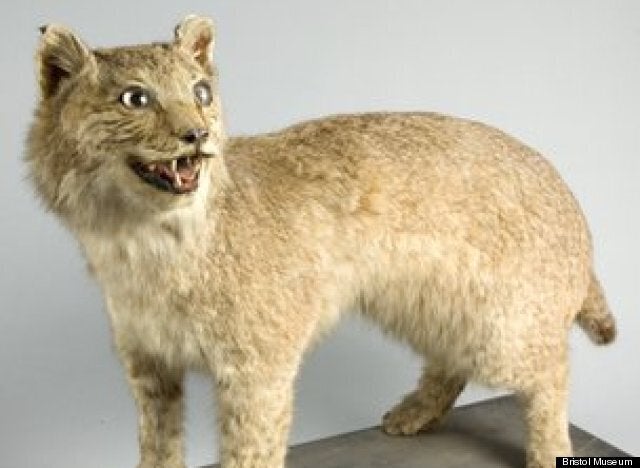A big cat prowled the Devon countryside more than a century ago, rediscovered remains from a museum's vaults have shown.
A Canadian lynx, a predator more than twice the size of a domestic cat, is the first proven case of an exotic big cat being at large in Britain.
Records show that the animal, thought to have escaped or been released from captivity, was shot by a Devon landowner in the early 1900s after it killed two dogs.

"This Edwardian feral lynx provides concrete evidence that although rare, exotic felids (cats) have occasionally been part of British fauna for more than a century," said lead researcher Dr Ross Barnett, from the University of Durham.
"The animal remains are significant in representing the first historic big cat from Britain."
Sightings of mystery "beasts" have largely been blamed on the introduction of the 1976 Wild Animals Act, which curbed a growing fashion for exotic and potentially dangerous pets.
Some owners were thought to have freed their animals into the wild to avoid falling foul of the law.
The new research provides further evidence debunking this theory, say the experts. In fact there is a long history of big cats being at large in the UK, they claim.
The lynx skeleton was recovered from an underground storeroom at the Bristol Museum and Art Gallery. Records also unearthed at the museum show that the animal had originally been mislabelled by curators in 1903 as a Eurasian lynx.
The Eurasian lynx was once an indigenous British species but had almost certainly become extinct by the 7th century AD.
Laboratory analysis of the Bristol specimen's bones and teeth indicated that it had been kept in captivity long enough to develop severe tooth loss.
Dr Darren Nash, from the University of Southampton, who co-authored the research published in the journal Historical Biology, said: "There have been enough sightings of exotic big cats which substantially pre-date 1976 to cast doubt on the idea that one piece of legislation made in 1976 explains all releases of these animals in the UK.
"It seems more likely that escapes and releases have occurred throughout history, and that this continual presence of aliens explains the 'British big cat' phenomenon."
Colleague Dr Greger Larson, from the University of Durham, said: "Every few years there is another claim that big cats are living wild in Britain, but none of these claims have been substantiated. It seems that big cats are to England what the Loch Ness monster is to Scotland.
"By applying a robust scientific methodology, this study conclusively demonstrates that at least one big cat did roam Britain as early as the Edwardian era, and suggests that additional claims need to be subjected to this level of scrutiny."
The lynx is now on public display at the Bristol Museum.